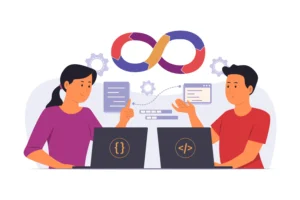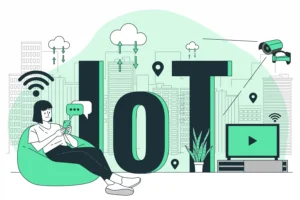As soon as a business cracks a customer’s buying algorithm, it secures more profit. The online and offline actions that a customer takes before buying a product are referred to as customer buying behavior. It may include search engine consultation, social media engagement, and various other actions. This process is an essential marketing measure to tailor a business’s current products or services and match their customer’s demands.
The ultimate tool that helps understand a buyer’s pattern is AI. It tracks customer behavior through their browsing history, email interactions, click-through rates, and other mediums. Without AI companies have to guess the market trend and pick a marketing strategy randomly. However, with AI-enabled methods, they can classify customers into different groups according to their preferences and pick the most relevant strategy. It becomes easier to understand their needs through technology tracking their behavior.
Apart from AI, there are certain ERP services such as LS Retail, that track prospects and existing customers’ interest and purchasing patterns from their engagement on their websites and other platforms. The analytics team can identify which customer browsed through what product. Also, they can check up on the number of customers retained on the website for a long. But the question remains: how can you understand your customer’s buying behavior?
The first step is to identify your prospective customers. Identify who will be interested in buying your item. Otherwise, it is just a waste of time to engage with customers who probably will never purchase your product.
Then study the inclinations of your valuable customers- the ones who fall for fewer service issues and contribute more to your profit. Understand their psychology while asking yourself the following questions:
- Do they make purchases after careful consideration or on impulse?
- Do they consider price over quality or vice versa?
- Are they your loyal customers who make frequent purchases or are they one-time buyers?
- Do they exclusively purchase from you or patronize your competitors as well?
- Do they contact you through a precise channel like- your website or an app?
Once you answer these questions, it’s time to dive deeper into the research.
Recognize The Buyer’s Need/ Desire: A person will not purchase a product or service until he needs it. The factors driving him to make purchases can be internal (Hunger or thirst) or external (from a promotion or word of mouth). As soon as you recognize their needs, you can segregate them into distinct groups.
Information Research: As you recognize a customer’s needs/ desires, the next step a customer would take is to carry out internal/external research of your business to figure out the best possible service or product for them. This can involve browsing through the graphics, print, and other media revolving around their central buying decision.
Evaluating Alternatives: At this stage, the customer scans through different products that are potential enough to fulfill their requirements based on alternative product attributes. The customer’s next step greatly relies on their attitude and involvement. For instance, if the customer has a positive attitude with high involvement, they are most likely to consider different brands and companies. However, in the opposite situation, the customer might go through one or two brands.
The Purchasing Stage: this is the second last stage of understanding customer behavior. The final purchase can be disrupted because of two factors 1) negative feedback from other customers and 2) the receptivity towards the negative feedback. A customer might drop the idea of making the final purchase under the influence of other customer feedback.
Post-Purchase Behavior: this is the last and the most crucial stage that defines if the buyer will purchase from the same brand in the future or not. They compare their current purchase with their previous purchase and identify if it meets their expected standards. If the product passes, it generates brand loyalty and more future purchases.
Final Words
With the help of AI or some ERP services like the one LS Retail offers, businesses can accumulate enough customer data to identify their buying behavior, catch current trends and make specific strategies for customers. Trident Information Systems is the Gold LS Retail Implementation partner and has serviced various businesses with the same. For further information or a demonstration, contact us.




